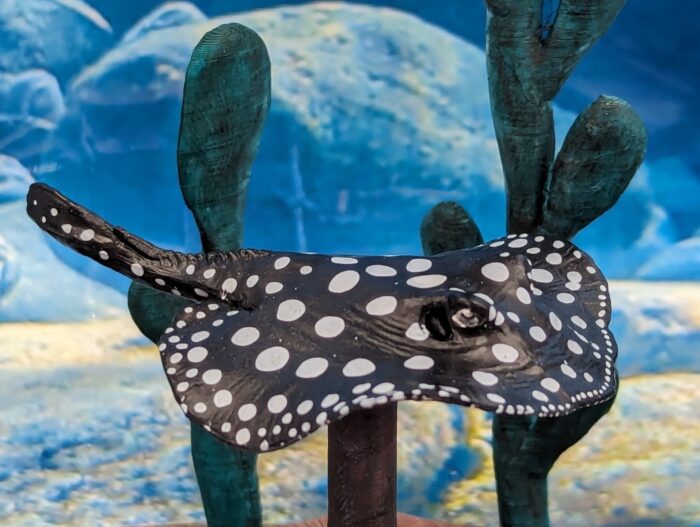I’m back with a fourth figure in the Mini Ancient Fish series 2 from Bandai. It seems to be, like the first series, the obligatory chondrichthyan in the set of fish representing notable species that have a presumably ‘ancient’ heritage from an evolutionary point of view. Does the figure today represent that?
Arapaima (Mini Ancient Fish Series 2 by Bandai)

This figure is a another in the Mini Ancient Fish series 2 from Bandai, the arapaima or pirarucu Arapaima gigas. This fish is famous as one of the largest strictly-freshwater fish in the world, naturally located in much of the Amazon river basin. Or at least the genus is…recent studies indicate that many discrete populations are actually unique species; this figure is listed as A.
Crawlers (Pocket Explorers by Phidal Publishing Inc.)

Pocket Explorers is a line of books by put out by Phidal Publishing. They designed for children and are educationally driven. Looking at their website, the themes are Reptiles, Wild Cats, Dinosaurs, Sharks, Polar Animals, Birds of Prey, Bears, and Crawlers, the last of which we will be looking at today.
Great Horned Owl (Wildlife by Mojö Fun)
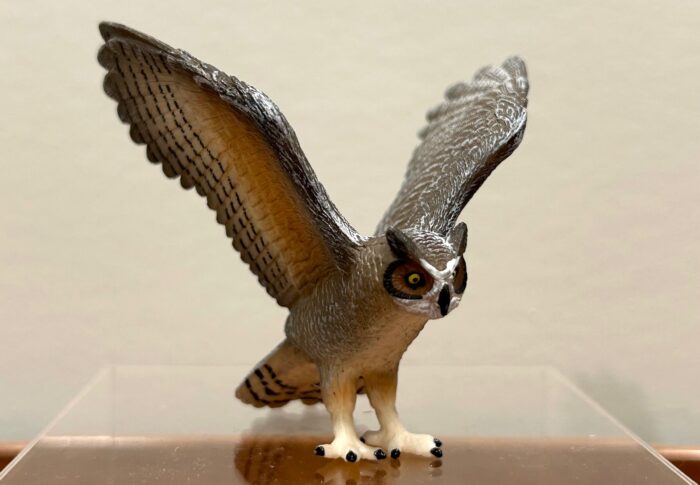
Review and images by Suspsy; edited by bmathison1972
Currently, there are more than 200 species of owl inhabiting our planet. They reside on every continent save for Antarctica and range in size from the tiny elf owl to the mighty eagle owl. But if there is one species that can truly be said to represent the owl family as a whole, it is most likely the great horned owl (Bubo virginianus) of the Americas.
Silver Arowana (Mini Ancient Fish Series 2 by Bandai)
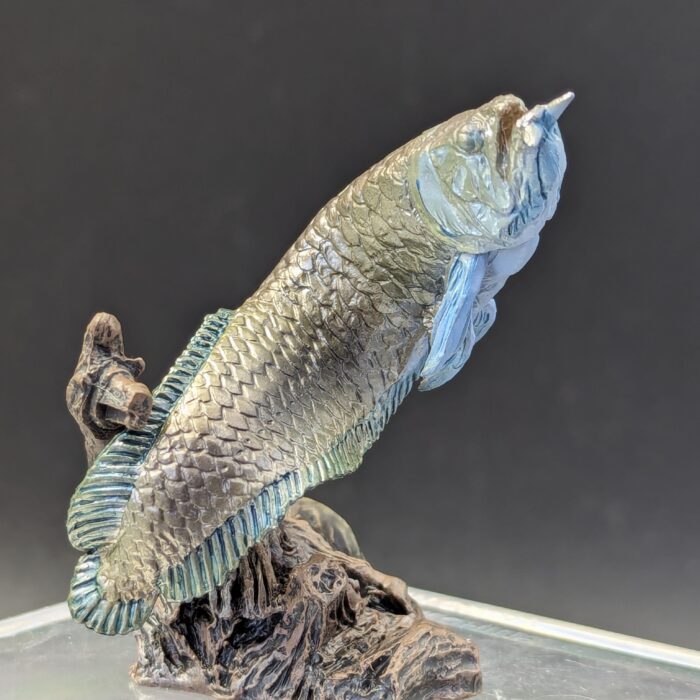
The silver arowana Osteoglossum bicirrhosum is a bonytongue fish found in black and whitewater habitats in many waterway basins of South America (except most of the Rio Negro). It is one of two species in the genus, both found in South America and occasionally overlapping in range. The species name comes from the two narrow barbels or cirrhi protruding from its lower jaw.
Velvet Worm (littlebigwomen)
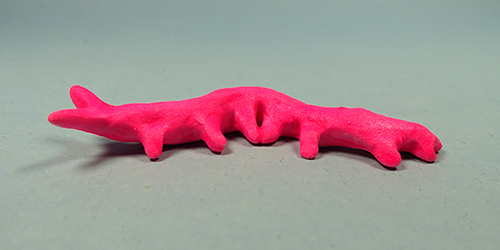
Review and images by stemturtle; edited by bmathison1972
The release of a figure that represents a neglected phylum is a wish come true for the synoptic collector. A velvet worm, also referred to as a peripatus (when unitalicized), belongs to phylum Onychophora. It resembles a caterpillar with antennae, having 13 to 43 pairs of stubby legs, corresponding to body segmentation.
Weasel (Wild Safari North American Wildlife by Safari Ltd.)

Today we’re looking at the Safari 2020 weasel, part of their North American Wildlife Collection. Safari’s website doesn’t specify the species, just that it belongs to the Mustela genus. The Mustela genus contains about 18 species, including the domestic ferret, European mink, stoats, and the least weasel…the smallest member of Carnivora.
Blue-Footed Booby (Wings of the World by Safari Ltd.)
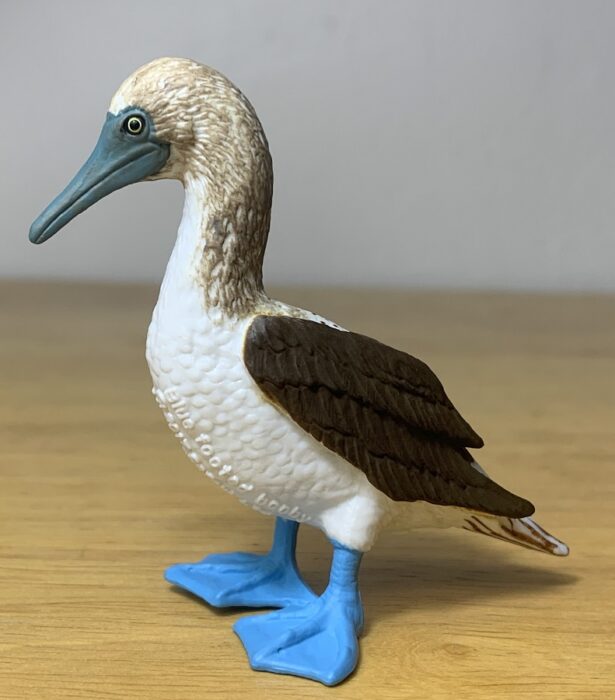
At the start of the year, I received an email notification from Safari Ltd. that they would be having a 50% off sale on their already discounted, discontinued figures. Not only were some of these figures now up to 75% off but this was also my last chance to get them, I didn’t squander it.
Mini Garden Birds (Archie McPhee)

Archie McPhee is a store based out of Seattle, Washington known for quirky and unusual novelty toys and kitsch gifts. They also have an online store. Among many of the products sold by Archie McPhee, which can include anything from rubber chickens to bacon-scented air freshener, to finger puppets, are a decent selection of toy animals.
Domestic Muscovy Duck (Farm Life by Papo)

The Muscovy duck (Cairina moschata) is a species of duck endemic to the American tropics, from the Rio Grande Valley of Texas and Mexico south to Argentina and Uruguay. The Muscovy duck was first domesticated in Brazil, prior to European discovery in the late 1490s. It was bred primarily for meat and today it is often referred to as a Barbary duck in a culinary context.
Amazon River Dolphin (Sealife by Collecta)
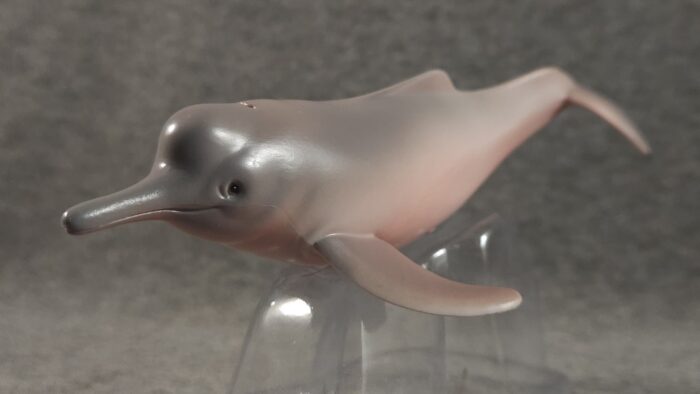
My thanks to Happy Hen Toys for providing this figurine for review. Be sure to check out their website down below.
River dolphins might not be as famously charismatic as their oceanic relatives, or as infamously dangerous as some contemporary freshwater predators; but they’re a remarkable and precious sample of the diversity of life which can be found in the planet’s river systems.
Scarlet Macaw (Wild Life America by Schleich)
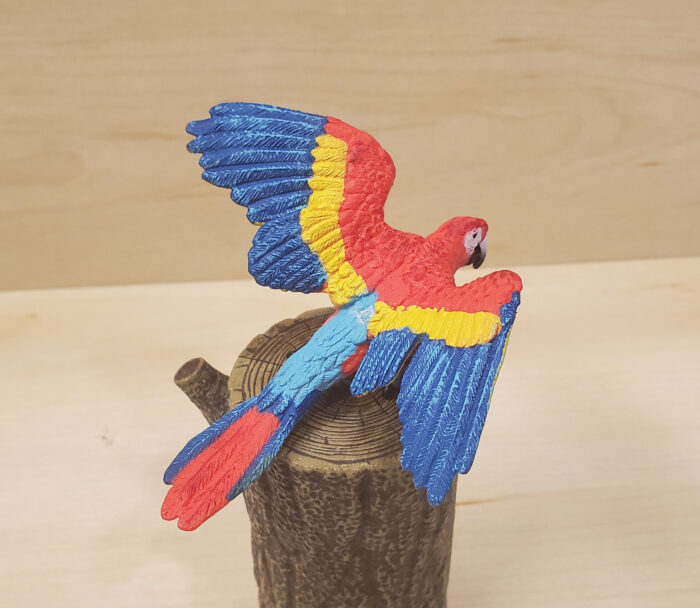
When Papo announced their 2024 line-up, I decided I would get the capuchin to replace my National Entertainment Collectibles Association (NECA) version, since the latter is an articulated accessory to an Ace Ventura action figure. It got me thinking, I should probably go ahead then and replace the NECA scarlet macaw as well, as I would much rather have representatives of these animals from ‘traditional’ toy animal manufacturers rather than action figure accessories (besides, while the NECA figure morphologically looks like a scarlet macaw, the animal in the film the toy was based on is actually a green-winged macaw).

